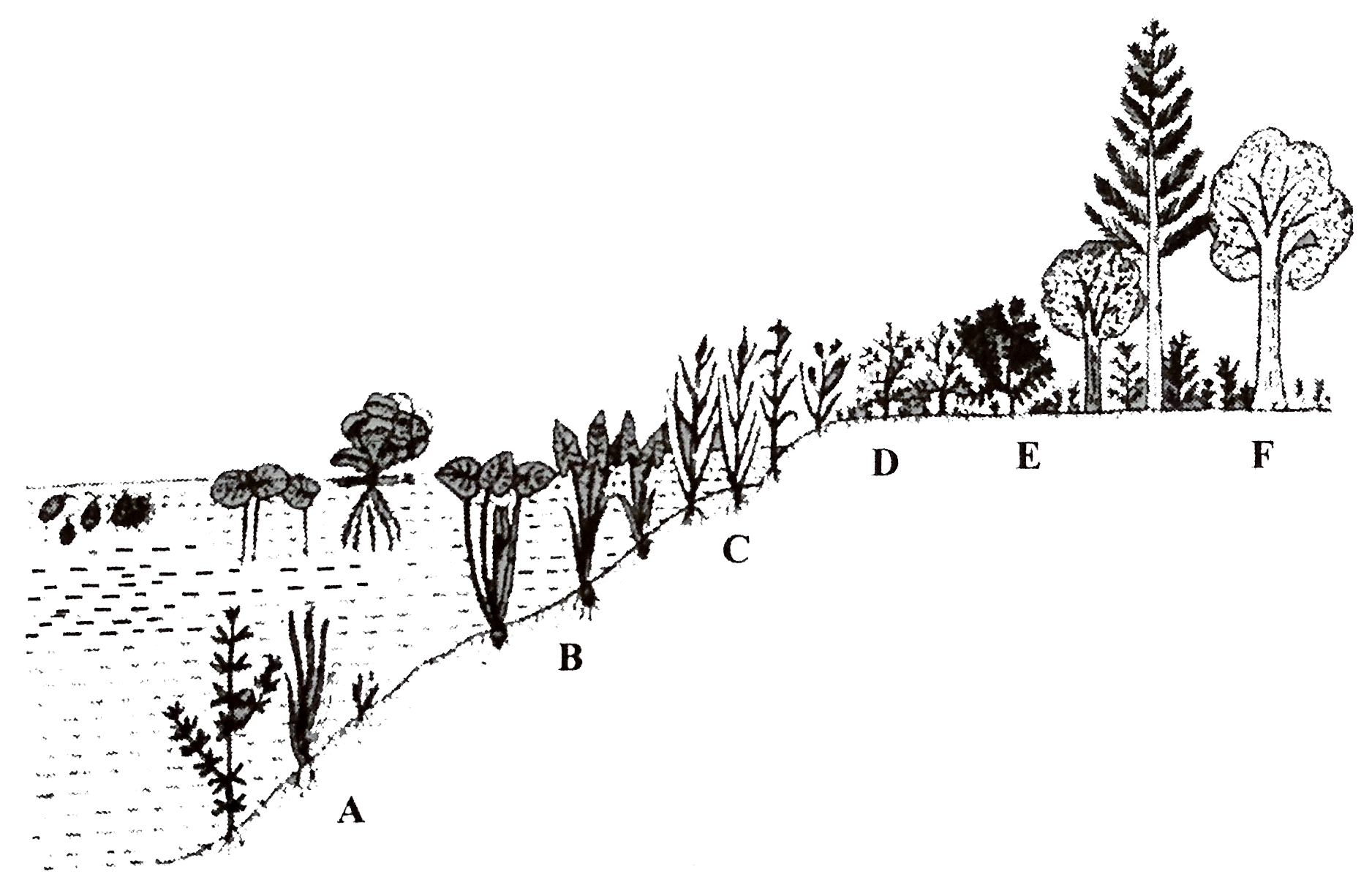The second stage of hydrosere is occupied by plants like
Salix
Vallisneria
Azolla
Typha
To answer the question about the second stage of hydrosere, we can follow these steps:
1. Understand Hydrosere:
- Hydrosere refers to the ecological succession that occurs in aquatic environments, such as ponds, leading to the formation of terrestrial ecosystems.
2. Identify the Stages of Hydrosere:
- The hydrosere consists of several stages, starting from the initial colonization of the water body to the eventual establishment of a land community.
3. First Stage:
- The first stage is the phytoplankton stage, which includes organisms like blue-green algae, diatoms, and bacteria.
4. Second Stage:
- The second stage is known as the rooted submerged stage. In this stage, plants that can grow with their roots submerged in water begin to thrive.
5. Example of Plants in the Second Stage:
- A key example of a plant that occupies the second stage of hydrosere is Hydrilla. This plant is adapted to grow in submerged conditions and is commonly found in freshwater bodies.
6. Conclusion:
- Therefore, the answer to the question is that the second stage of hydrosere is occupied by plants like Hydrilla.
Final Answer:
The second stage of hydrosere is occupied by plants like Hydrilla.
---
- Hydrosere refers to the ecological succession that occurs in aquatic environments, such as ponds, leading to the formation of terrestrial ecosystems.
- The hydrosere consists of several stages, starting from the initial colonization of the water body to the eventual establishment of a land community.
- The first stage is the phytoplankton stage, which includes organisms like blue-green algae, diatoms, and bacteria.
- The second stage is known as the rooted submerged stage. In this stage, plants that can grow with their roots submerged in water begin to thrive.
- A key example of a plant that occupies the second stage of hydrosere is Hydrilla. This plant is adapted to grow in submerged conditions and is commonly found in freshwater bodies.
- Therefore, the answer to the question is that the second stage of hydrosere is occupied by plants like Hydrilla.
The second stage of hydrosere is occupied by plants like Hydrilla.
Topper's Solved these Questions
- ECOSYSTEMBOOK - VMC MODULES ENGLISHCHAPTER - ECOSYSTEMEXERCISE - EFFICIENT
49 Videos
- BIOTECHNOLOGY AND ITS APPLICATIONS BOOK - VMC MODULES ENGLISHCHAPTER - BIOTECHNOLOGY AND ITS APPLICATIONS EXERCISE - IMPECCABLE
51 Videos
- EVOLUTION BOOK - VMC MODULES ENGLISHCHAPTER - EVOLUTION EXERCISE - IMPECCABLE
54 Videos
Similar Questions
the photon radiated from hydrogen corresponding to the second line of Lyman series is absorbed by a hydrogen like atom X in the second excited state. Then, the hydrogen-like atom X makes a transition of nth orbit.
View SolutionThe photon radiated from hydrogen corresponding to the second line of Lyman series is absorbed by a hydrogen like atom X in the second excited state. Then, the hydrogen-like atom X makes a transition of nth orbit.
View Solution
Knowledge Check
In the given figure A,B,C,D,E and F represent some stages of hydrosere, Select the correct statement regarding these.
 AHydrilla and Potamogeton occur in stage A,BPhragmites and Typha occurs in stage C, Carex and Cyperus occur in stage D.CAlinus and Populus occur in stage E, Accer and Quercus occur in stage F.Dall of these.
AHydrilla and Potamogeton occur in stage A,BPhragmites and Typha occurs in stage C, Carex and Cyperus occur in stage D.CAlinus and Populus occur in stage E, Accer and Quercus occur in stage F.Dall of these.
A : Inmosses, second stage of gametophyte consists of upright, slender axes bearing spirally arranged leaves.
R : This stage of gametophyte consists of sex organs.
View SolutionIn which of these plants , the diploid stage of their life is dependent on the haploid stage of their life ?
View SolutionExpanded green petiole specialised for photosynthesis in some plants like Acacia auriculiformis is
View SolutionDraw a well labelled diagram to show the anaphase stage of mitosis in a plant cell having four chromosomes.
View SolutionName the terminal stage of ageing in the life cycle of plants.
View SolutionThe trees occupy the top vertical strata of a forest , shrubs the second and herbs and grasses occupy the bottom layers , this represents
View SolutionTwo pea plants were subjected cross pollination. Of the 183 plants produced in the next generation, 94 plants were found to be tall and 89 plants were found to be dwarf. The genotypes of the two parental plants are likely to be:
View Solution
